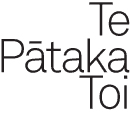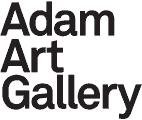PUBLIC PROGRAMME JUNE–AUGUST 2021
Crossings (a group show about intimacies and distances)
Laundry day: a podcast series of unfolding conversations with the artists in Crossings
rss.com/podcasts/adamartgallerytepatakatoi/
“At times we phone or Skype. It’s the only way we can talk.” — Rhim Ibrir, Havarie, 2016
Crossings is a show about the closeness of distance, the experience of connecting with others from afar, while ensconced in our homes, physically disconnected yet always online. For the duration of the exhibition, we will feature a fortnightly podcast series, pairing artists in Crossings with each other, or with friends and collaborators, to talk about how their practices intersect and collide, sharing readings, films and anecdotes. Recorded from afar, from the contributors’ individual homes, Laundry day is a chance to connect from a distance.
Wednesday 30 June, 6pm
Wednesdays at the Adam: film screening
Todd Haynes, Safe, 1995
In March 2020, The New Yorker described Todd Haynes’ 1995 film Safe as “a tale of two plagues”. “Then, as now,” wrote David Roth, “there is a plague haunting the premises and trying the locks. Then, as now, those in power have disclaimed any responsibility and elected to wait and see how things play out; the President is once again posturing and chuckling through a crisis that he can’t quite bring himself to take seriously.”
Safe follows Carol White, played by Julianne Moore, a Californian housewife who develops an acute and sudden sensitivity to unknown elements in her environment – a fable of the AIDS pandemic that has outlasted its original intent, “in large part,” Roth noted, “because the dread at the heart of it—that something invisible and relentless is loose and at prey, and that anyone could become susceptible to it, at which point they would be very much on their own—has never really dispersed. The film’s vision of a culture fundamentally incapable of comprehending or countenancing illness and weakness has insured that Safe has stayed not just unsettling but queasily current.”
Wednesday 14 July, 6pm
Wednesdays at the Adam: film screening
Laura Waddington, Border, 2004, with an introduction by Murdoch Stephens
In 2002, filmmaker Laura Waddington spent months in the fields around Sangatte Red Cross camp in France with Afghan and Iraqi refugees, who were trying to cross the channel tunnel to England. Filmed at night with a small video camera, the figures lit only by
the distant car headlights on the motorways, Border is a personal account of the refugees’ plight and the police violence that followed the camp’s closure.
Following the screening, we will have a Q&A with writer and activist Murdoch Stephens, the driving force behind ‘Doing our Bit’, the campaign to double New Zealand’s refugee quota.
Wednesday 28 July, 6pm
Wednesdays at the Adam: film screening
Forugh Farrokhzad, The House is Black, 1962 with an introduction by Richard Shepherd
The only film directed by Iranian poet Forugh Farrokhzad, The House is Black depicts a leper colony near the city of Tabriz in northwest Iran. Accompanied by a voiceover drawn from the Old Testament, the Koran and the filmmaker’s own poetry, the inhabitants of the colony live, worship, learn, play and celebrate in an isolated community shut off from the rest of the world. As The Guardian has recently noted, the film takes on a new meaning in the context of COVID-19: “Our pandemic will pass, but for the quarantined patients in the film, especially those with advanced leprosy, illness and isolation from the rest of society are facts of life.”
The screening will be introduced by Richard Shepherd, whose work Crisis Meeting, 2017, is included in the exhibition. Shepherd is currently undertaking a PhD in Film at Te Herenga Waka Victoria University of Wellington.
Wednesday 11 August, 6pm
Wednesdays at the Adam: film screening
Derek Jarman, Blue, 1993
In Derek Jarman’s Blue, the colour becomes a place of refuge that “transcends the solemn geography of human limits.” Consisting solely of a blue screen, with narration from Jarman and friends, Blue was made as Jarman’s health deteriorated from AIDS-related illness, rendering him partially blind, his vision interrupted by blue light.
As Boaz Levin writes in On Distance, “it is as if Jarman’s monochrome screen becomes a retreat from the danger of overexposure, a cure for the redundancy of figurative representation, a space for affect, perhaps, rather than mere sensation.”
CANCELLED: Saturday 21 August, 1pm–5pm
Public/Private
Workshop
OK319 Seminar Room, Old Kirk Building, Gate 3, Kelburn Parade
A half-day workshop to explore the public/private divide and art’s role in mediating these states. Relevant thinkers and practitioners will address questions such as: what is the ‘public sphere’ today? What role can the public gallery play as an open space in civic life? How do we correlate external labels with internal feelings in the process of making and receiving art works? Limited to 20 participants. To secure a place email ann.gale@vuw.ac.nz. Details of the workshop’s format, contributors, and readings will be distributed prior to the event.


